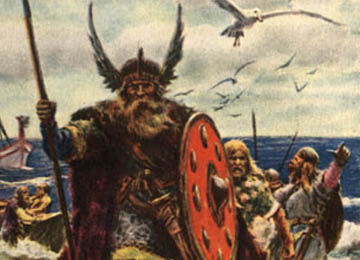1. Mind the say-do gap. This is all about
trust, which is the bedrock of effective leadership. Your behavior is
your single greatest mode of communication, and it must be congruent
with what you say. If your actions don’t align with your words, there’s
trouble. And it can turn into
big trouble if not corrected
swiftly and genuinely. Since it’s often difficult to see the say-do gap
in yourself, rely on a few trusted colleagues to tell it to you
straight and flag discrepancies. Rule of thumb: it’s better to say
nothing or delay your communication until you’re certain that your
actions will ring true.
2. Make the complex simple. Your employees and
customers are being bombarded 24/7 by information, making it hard for
them to hear you. Simplicity has never been more powerful or
necessary. Effective leaders distill complex thoughts and strategies
into simple, memorable terms that colleagues and customers can grasp and
act upon. If you’re having trouble distilling something to its essence,
it may be that you don’t understand it. So get clear and look out for
technical jargon and business speak, which add complexity.
Say what you mean in as few words as possible.
3. Find your own voice. Use language that’s
distinctly your own. Let your values come through in your communication.
Often, executives will opt for the sanitized “corporate voice” instead
of their own because they think the former is more eloquent; more
appropriate. This is not to say that correct grammar and use of language
aren’t important — strong leaders know how to string a sentence
together. But don’t fixate on eloquence; concentrate on being distinct
and real. People want real. People respect real. People follow real.
Don’t disguise who you are. Be genuine, and people will respect you for
it.
4. Be visible. Visibility is about letting your
key stakeholders get a feel for who you are and what you care about.
It’s easy to hide behind a computer and transmit messages to others
without seeing or interacting with them. Although e-communication serves
a valuable purpose, it is no substitute for face-to-face and
voice-to-voice communication. In today’s environment, people are often
burned out and need to feel a personal connection to you and the work
that you believe in. Do a “calendar test” to make sure you’re
allocating time regularly to be out on the floor, in the factory, in the
call center, in the lab, in the store. Show your people that you’re
engaged and care about them and their work.
5. Listen with your eyes as well as your ears.
Stop, look and listen. Remember that effective communication is two-way.
Good leaders know how to ask good questions, and then listen with both
their eyes and ears. It’s easy to be so focused on getting your message
out — or persuading others — that you don’t tune in to what you see and
hear. Because you’re in a position of authority, the stakes are even
higher because you won’t always get direct feedback. You need to read
between the lines. Listen and hear what is coming back at you. Look for
the nonverbal cues. Sometimes a person’s body language will tell you
everything you need to know.







 Viking’s ashore. Illustration Long Beach City College
Viking’s ashore. Illustration Long Beach City College Pounding the bones. Photo by Rotem Eldar
Pounding the bones. Photo by Rotem Eldar






















